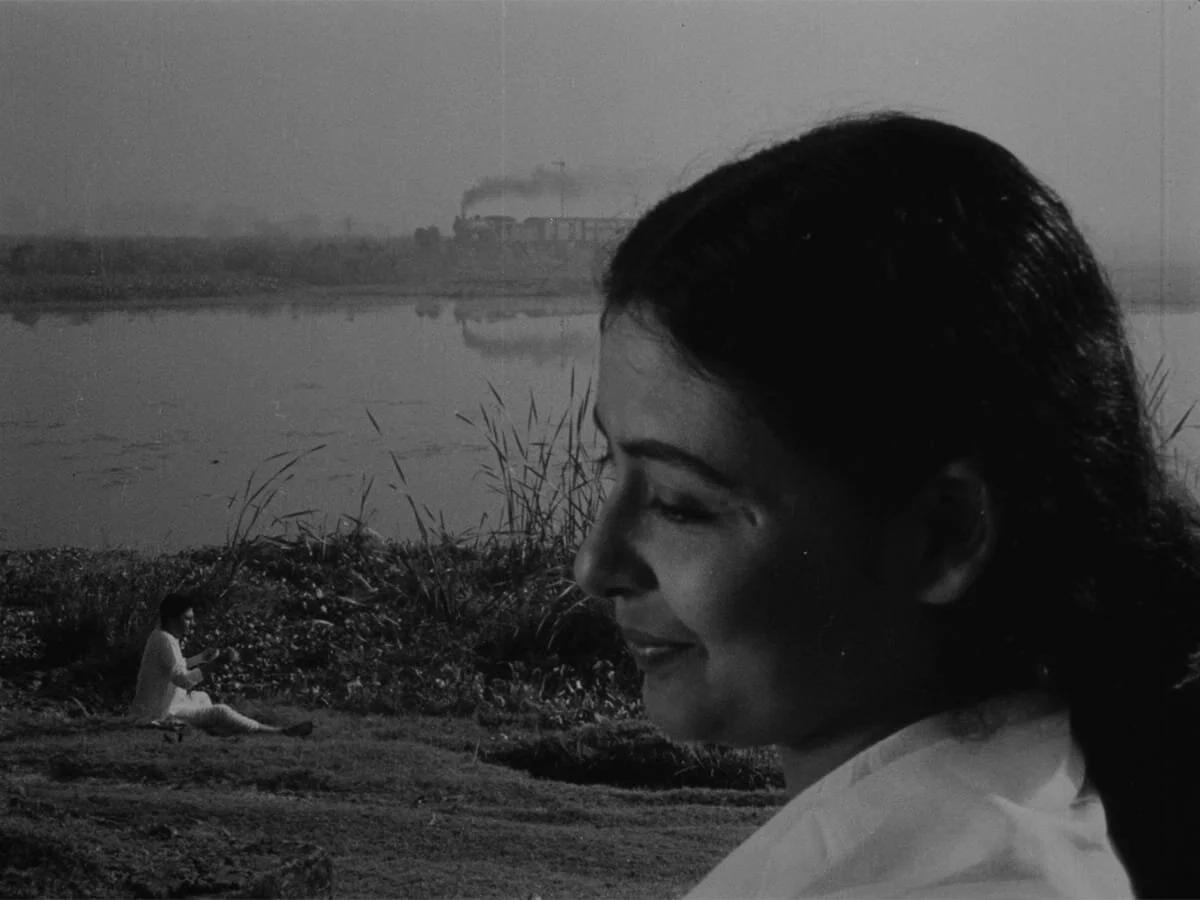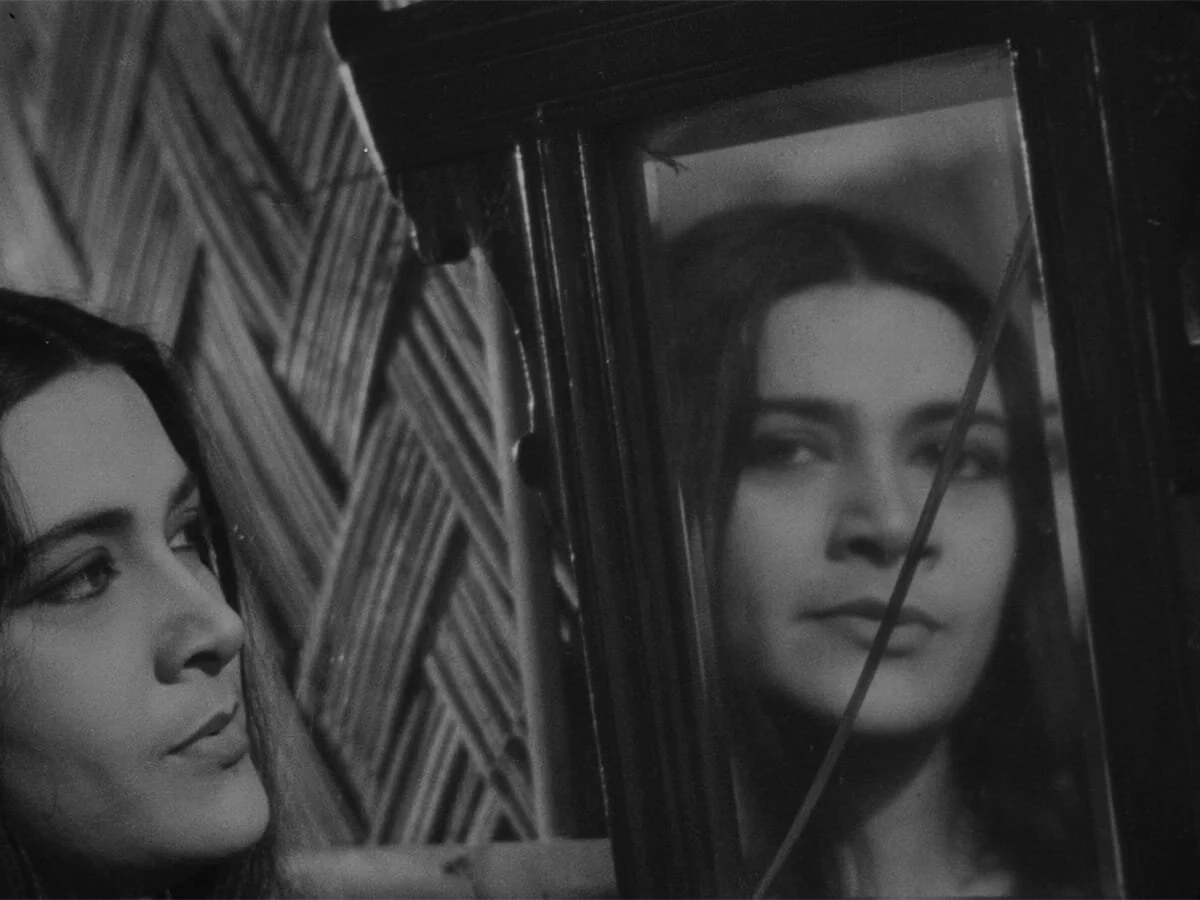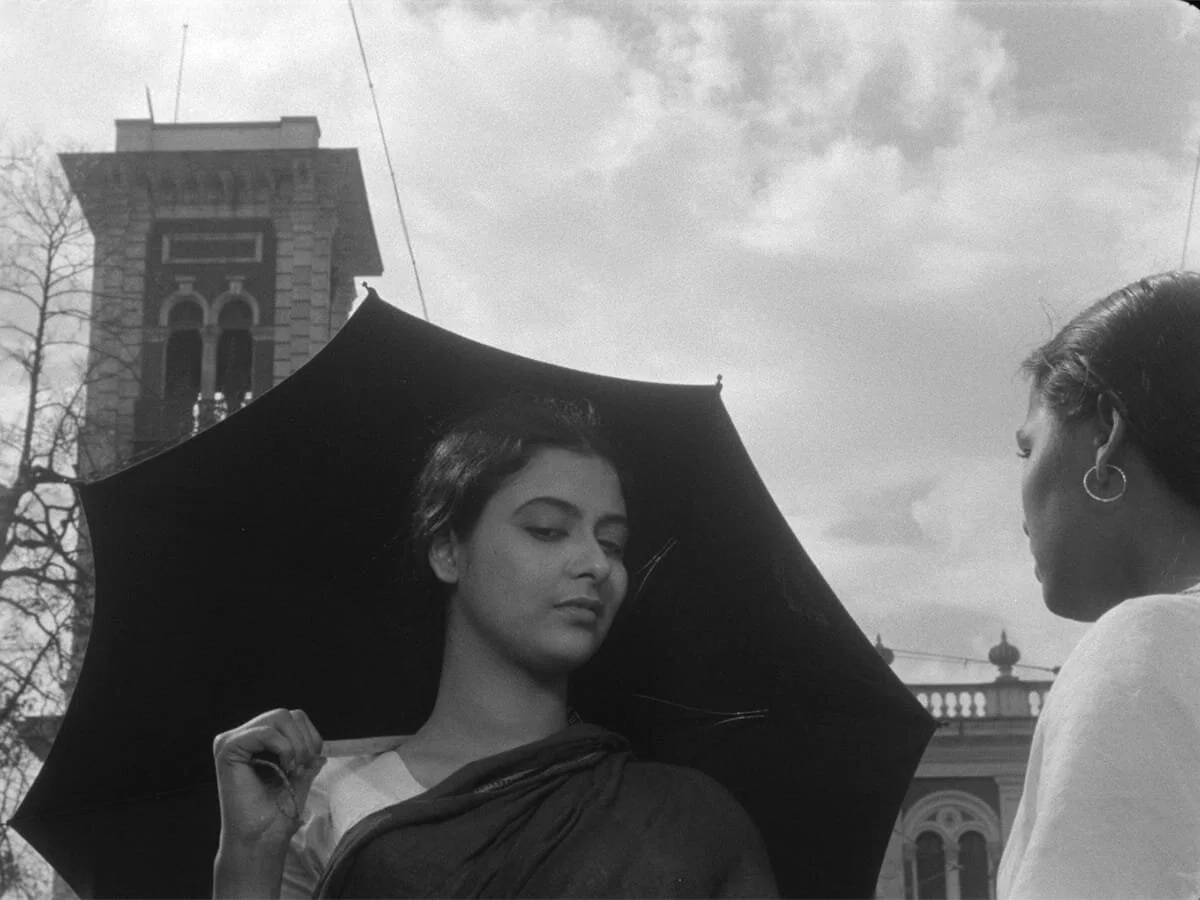This is a comparison of Ray and Ghatak, but mainly a review of Meghe Dhaka Tara (The Cloud-Capped Star). Contains some spoilers.
A Contradictory Camera
The oeuvres of Satyajit Ray and Ritwik Ghatak are often compared in film academia, especially in the West, for a number of reasons. For one, the two filmmakers are within the handful of Indian filmmakers that most Western art cinema audiences have any awareness of (as of writing, they are the only Indian directors to have more than one film in the Criterion Collection, for example). More importantly, though, both filmmakers came from similar backgrounds—they were Bengali, contemporaries of one another, and made films about the hardships of the people in their communities. While Ray and Ghatak are both considered to be central figures in parallel cinema (also known as New Indian Cinema), what makes comparing them so interesting is the dissimilarity between their two approaches to filmmaking.
During his time living in London, Satyajit Ray famously saw Vittorio De Sica’s Bicycle Thieves, a theater experience that later Ray said was an inspiration for the beginning of his film career (Robinson 48). De Sica was a pioneer in the Italian neorealist movement, and many characteristics of his style can be seen within Ray’s filmmaking: on-location shooting, simple camera movement, stripped-back production, topics related to poverty, etc. Not only do aspects of De Sica’s films overlap with Ray’s, but crucial elements of the Italian neorealism overall influenced New Indian Cinema generally, especially the desire for realism and naturalism. Ravi Vasudevan in “Nationhood, Authenticity and Realism in India Cinema” writes, “The popular compendium—studio shooting, melodramatic, externalized forms for the representation of character psychology, non- or intermittently continuous forms of cutting, diversionary story lines, performance sequences—was not acceptable within the emergent artistic canon [within India], for they undermined plausibility and a desirable regime of verisimilitude” (1).
Ray’s Pather Panchali in 1955 became one of the defining films of the movement precisely because of its adherence to the aforementioned qualities associated with the movement, shunning the ways of popular cinema. Ray is very careful with the camera; for the most part, he only pans when the action within the frame calls for it, and most of the film is shot in medium and medium close-up. Occasionally, during key moments of the film (such as Apu’s encounter with the train, beginning the film’s thematic thread of the nonstop rush toward modernity), he will break from his unembellished approach. Because of Pather Panchali’s success, Ray became the public face of parallel cinema, and this style defines the way Bengali cinema from the ‘50s onward is discussed today.
Although they are often grouped together and were colleagues and friends during their time, Ghatak’s cinematic vision distinctly diverges from Ray’s. Ghatak takes all the most ostentatious moments from Pather Panchali and makes them center stage. In fact, his most famous film Meghe Dhaka Tara is markedly melodramatic, something which Vasudevan claims was to be avoided at all costs. Ghatak’s films feature a unique, to the time, mixture of melodrama, sociopolitical commentary, atypical camera technique, and realism. Past filmmakers in other parts of the world had achieved elements of the style but never its entirety. For example, Hollywood director Douglas Sirk released a string of film melodramas in the ‘50s that almost all dealt with gender, race, and class in one way or another, but he always cast big stars and his films miss that dash of naturalism that keeps Ghatak’s work grounded. If we look later in cinema history, there are far more comparable films, such as Rainer Werner Fassbinder’s (for instance, Ali: Fear Eats the Soul which was in part an homage to Sirk’s Imitation of Life and All that Heaven Allows) and New German Cinema as a whole. Additionally, there are a handful of films containing that particular blend of aesthetics and intent from around Meghe Dhaka Tara’s release, such as Soviet film The Cranes are Flying.
Nevertheless, Ghatak’s conception of film was unique to the time, especially within India. Bhaskar Sarkar writes in Mourning the Nation: Indian Cinema in the Wake of Partition that “combining classical, folk, and popular Indian aesthetics with Jungian psychology and Soviet-style montage was, for him, a legitimate way of forging a new kind of film language.” Furthermore, “Ghatak conceived of film as an omnibus art form: he drew upon sources as disparate as classical drama and music, folk theater and music, tribal dance, Buddhist sculpture, the Vedas and the Upanishads, popular music, mythology” (209-210). In other words, his films accommodate many influences, some of them seemingly contradictory.
Ghatak often uses his characters like objects, placed carefully within the frame, right at the edges in striking compositions. He also has a proclivity for immersing the characters within darkness. Yet he still maintains a compassionate connection with the people in his stories. For example, in Meghe Dhaka Tara, some time after Nita discovers that her lover Sanat has left her for her sister, and after her brother Shankar announces he will be leaving Calcutta, we get one of the most affecting moments of the film: Shankar teaches Nita one of his songs. Ghatak begins the sequence with a few close-ups of Shankar before cutting to a medium of the two of them. Besides the tiny points of light that poke through the weave of the wall behind them, they are almost entirely enclosed in darkness. A moderately paced dolly back, and now the two of them are at the very bottom of the frame. As their song progresses, we make our way back to them very slowly—until suddenly Ghatak cuts to Nita’s first close-up in the scene, a deeply uncomfortable shot, camera far below her, titled up. It is certainly not a flattering angle, and it isn’t something you’d find in more commercial filmmaking.
That close-up of Nita is key: although it is jarring and somewhat voyeuristic, it also involves quite a bit of subtlety within Supriya Choudhury’s performance. As she tilts up her head, there is the hint of a tear, a glisten. The camera is slightly back focused on her hair and ears, so on the celluloid itself it appears as a few out-of-focus highlights located right at the corner of her left eye. It is this mix of complex filmmaking craft and empathetic character work that distinguished Ghatak within the mix of New Indian Cinema filmmakers. “Note the absolute primacy that Ghatak accords to the social existence of humans,” writes Sarkar, “his insistence on the materiality of human life … This polarized distinction between the personal and the social, the subjective and the objective, is a legacy of idealist philosophies: Ghatak’s films … appear to transcend these oppositions” (213).
Parallel cinema is known for its stripped-back, naturalistic style, and yet that doesn’t paint a full picture. Maybe if we were to ignore the rest of the movement besides Ray, we could draw such conclusions, but Meghe Dhaka Tara alone indicates the limitations of that perspective. Just as much as Ray, Ghatak and his elaborate, sympathetic camera deserve to be fully acknowledged within the cinematic canon.




